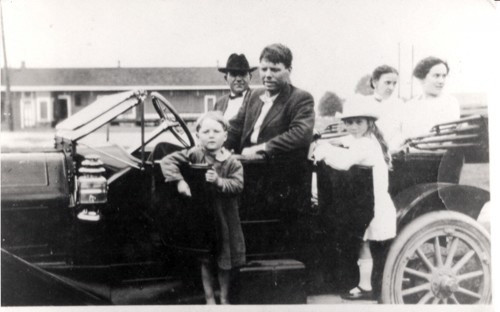What Happened To Bobby Dunbar? 'This American Life' Revisits The Century-Old Mystery

Four years ago, "This American Life" first broadcast what would become one of the radio show's most popular episodes ever, "The Ghost of Bobby Dunbar." Reported by Tal McThenia, the story recounted one woman's quest to find out the truth behind what had become the history of her family. Margaret Dunbar Cutright wanted to know if her grandfather was who everyone thought he was.
On Sunday the show will re-air the episode to mark the hundredth anniversary of the kidnapping and to coincide with a new book about the events that unfolded so long ago. It will be available to download in the podcast section of the iTunes store and for streaming on the "This American Life" website.
In 1912 a young boy went missing after he was last seen during a camping trip with his parents in a Louisiana swamp. Then, eight months later, a boy was found with a handyman named William Walters. The Dunbars claimed him as their own, winning "Bobby" in a court case against a woman named Julia Anderson, who also thought the child was hers.
"The Ghost of Bobby Dunbar" detailed for listeners the saga that was to follow. The Dunbar kidnapping and ensuing controversy over who the boy's real parents were dominated the national headlines until 1914. Then -- generations later -- Margaret researched the case by rereading hundreds of news clippings, scouring libraries and archives throughout the South, and by interviewing the surviving members of the Dunbar and Anderson families.
Media reports from early in the 20th century were anything but favorable toward Julia Anderson, painting her as a woman who couldn't hold her life together and wasn't fit to be a mother. One newspaper implied she was a prostitute while portraying the Dunbars as a couple that would be better fit as the parents of the child.
As time went, on the Anderson family grew to resent -- and even fear -- the Dunbars because of their feeling that Bobby had been taken from them. Conversely, the Dunbar family chalked up Julia Anderson as a deranged person from far in the past.
When Margaret dredged up the case, she brought up emotions some family members had repressed all their lives. She forced herself to dig into the forgotten facts of her own family, finding a history that didn't quite measure up to family lore. The end of the story -- and the speculation surrounding it -- didn't seem to soothe those feelings.
Countless fans have cited "Dunbar" as the jumping off point into the stratosphere of "This American Life" since it first aired in 2008. The episode weaves two points of view into a complex, layered story that happened 100 years ago.
Now, Margaret Cutright and McThenia have collaborated on a book that details the story in ways the radio documentary did not. "A Case for Solomon: Bobby Dunbar and the Kidnapping that Haunted a Nation," according to its reviews, explores the redemption felt by each family since "The Ghost of Bobby Dunbar" was broadcast four years ago.
"But no matter how much research we did, there were still -- and will always be -- pieces missing," McThenia wrote in a column for the Huffington Post. "Contradictory reportage, unknowable psychology, gaps in or losses of the historical record. The experience of mystery, and mystery-solving, then, became part of the book's voice. We proffer raw material for readers to sift through; we point at holes for readers to peer down into."
© Copyright IBTimes 2025. All rights reserved.





















